I have found a new thrill: photographing animals at the Hanover Zoo, my local menagerie.
Well, what is it about then? Taking pictures of animals differs from taking pictures of humans. Do animals get uncomfortable when they notice a camera? No. Or do they tend to pose instead? Again, a clear denial. In addition, each species exhibits a specific behavior – some hide inside their hole while others frolic around. I suppose, therein lies a large portion of the fun.
One thing I have learned fast: it takes time to get some good shots. As so often in life, patience and humbleness are the key. According to my experience, it helps to restrict oneself on just two or three species per visit. The tigers and the hippos? Why not? Or the flamingos and the giraffes? Good choice. Maybe the rhinos and the polar bears? That’s okay, too. But not all of them the same day. In this regard, the conditions are favorable for me: the zoo is located in a 10 minute-range from my home and I hold an annual ticket. Thereby, I am able to go there quite often – and I don’t feel the urge to see as many animals as possible when I’m on the site.
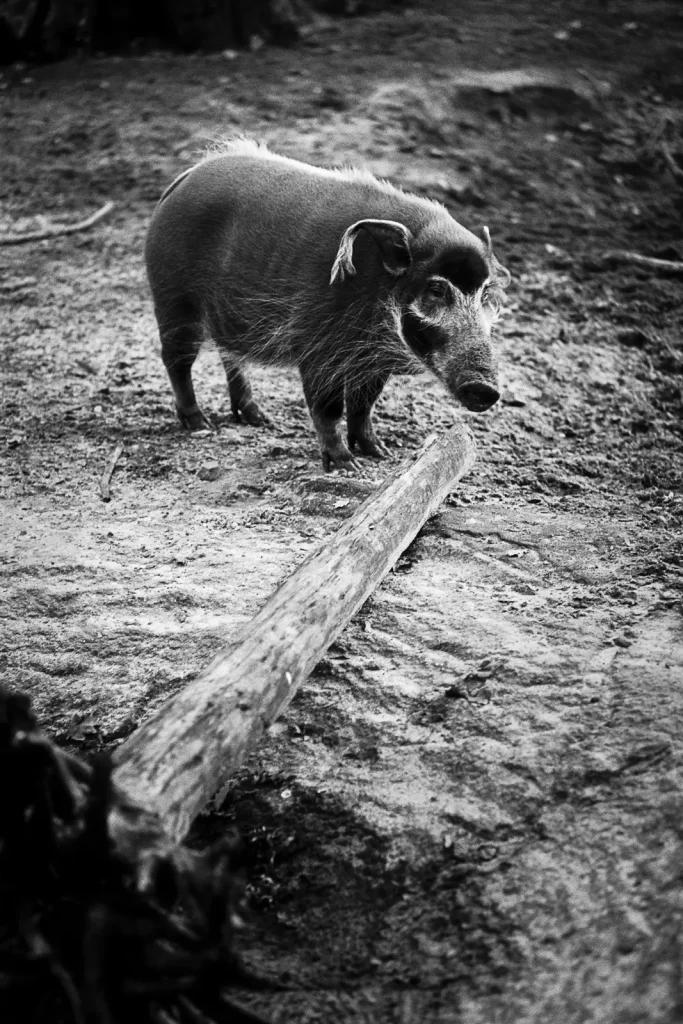
Catch them if you can
The zoo seems to be one of these places where people still bring their “real” cameras with them (though smartphone photography is ubiquitous here, too). Once I was watching the red panda, when a DSLR shooter joined me. He pointed his telephoto lens at the little fellow rushing through the tree tops and started a machine gun fire. If I had to guess, I would say my colleague took at least two hundred images within five minutes. I, for my part, quickly realized that the red panda was too far away for the 90mm lens I had chosen. Hence, I continued to observe and didn’t press the shutter at all.
With 35mm, I typically end up with 38 exposures per roll. So the combination of film photography and erratic moving animals can easily equal a losing bargain. I am still struggling to realize the right moment for taking the shot. How often have I thought “This could be it!”, a split second later followed by a “Maybe it will get even better?”. The moment I am mentally ready to execute it, the situation has already passed. Street photographer’s crux, I guess: nailing the point between “I was too fast” and “I hesitated too long”.
But it’s not that the first photographs of animals were shot with the invention of digital cameras. A myriad of impressive images was created before on film, over a span of many decades. (Just think of National Geographic.) As Gregory “Egor” Simpson once pointed out: “Analog photography, unlike digital, required actual work.” If you want to use film photography for certain types of subjects, you have to acquire certain skills. And for me, this fact is just: a great thing.
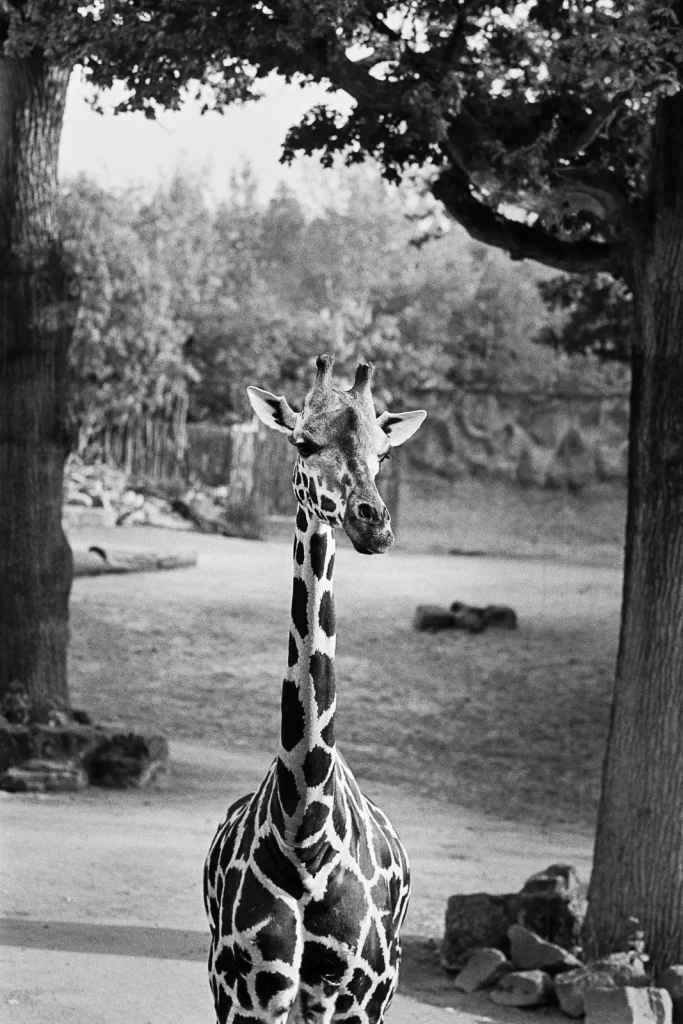
Too much monkey business
Why do some animals get so much attention, more than others? Why do we want to watch them for hours? I suppose, often it is this “look in the mirror” thing. Take the Gorillas: they resemble humans in their facial expressions and their body language. Sometimes, the Gorillas are contemplating a serious problem. But are they really? Or they seem extremely bored. Excited. Tired. Satisfied. Annoyed. Happy.
For me, strolling through the zoo feels mostly like a little vacation. Do you remember the comedy movie “Office Space”? When the frustrated programmer Peter Gibbons attends a hypnotherapy session and asks the doctor: “Is there any way that you… sorta just zone me out that I don’t know that I’m at work? […] Could I come home and think that I’ve been fishing all day?” – Sometimes, we all need a place where the peculiarities of work melt away.
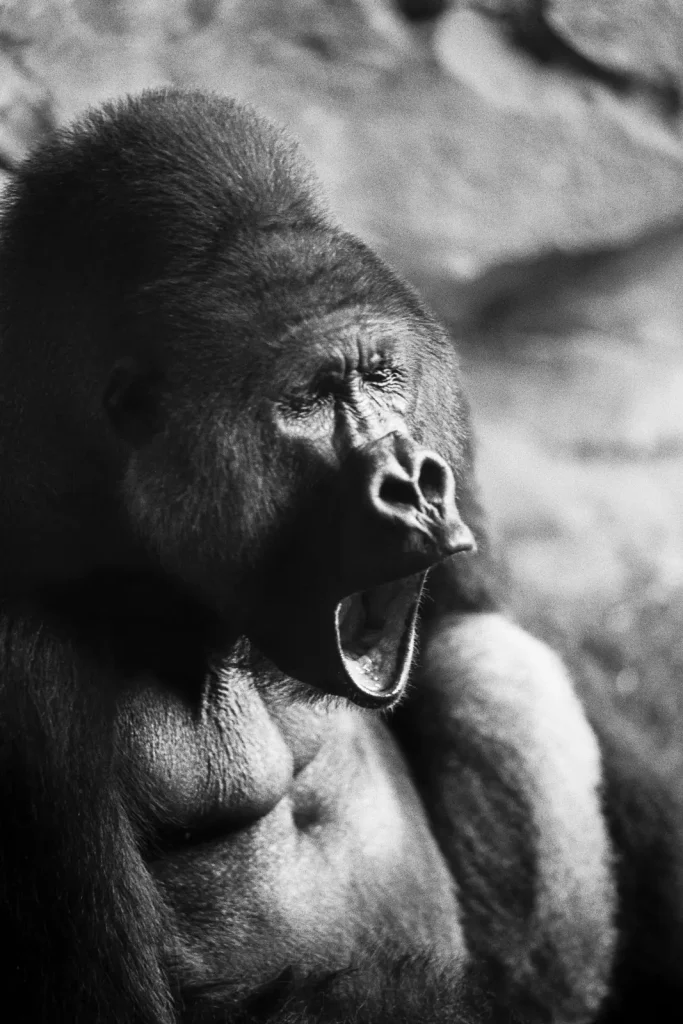
The scope of this short article lies on the subject matter and not on the tools I used. This time, I find it more appealing to report on inspirational places rather than on familiar (to you) types of cameras. Hence just a short note gear-wise: I relied on different Leica rangefinder cameras and lenses combined with various black-and-white films (the usual suspects made by Ilford and Kodak). So if the usual gear shot opener is obsolete, what to do instead? Correct, I present you another animal!
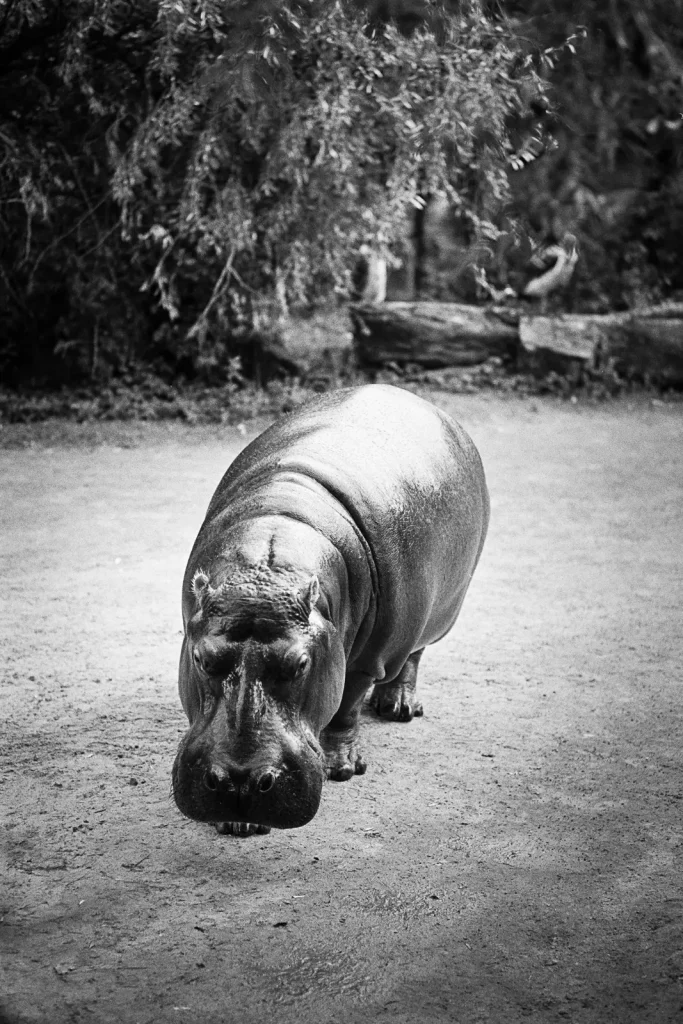
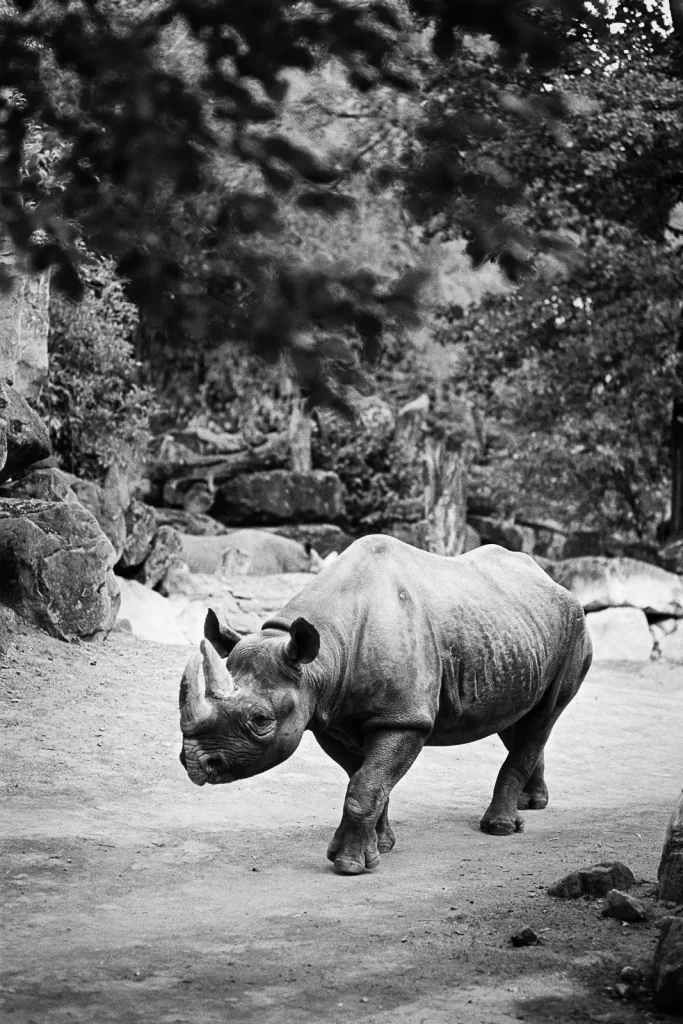
Finally, I would like to thank the Hannover Zoo for the kind permission to publish these photographs here at 35mmc. If you live closer by, pay the zoo a visit. And thank you for reading!
Share this post:
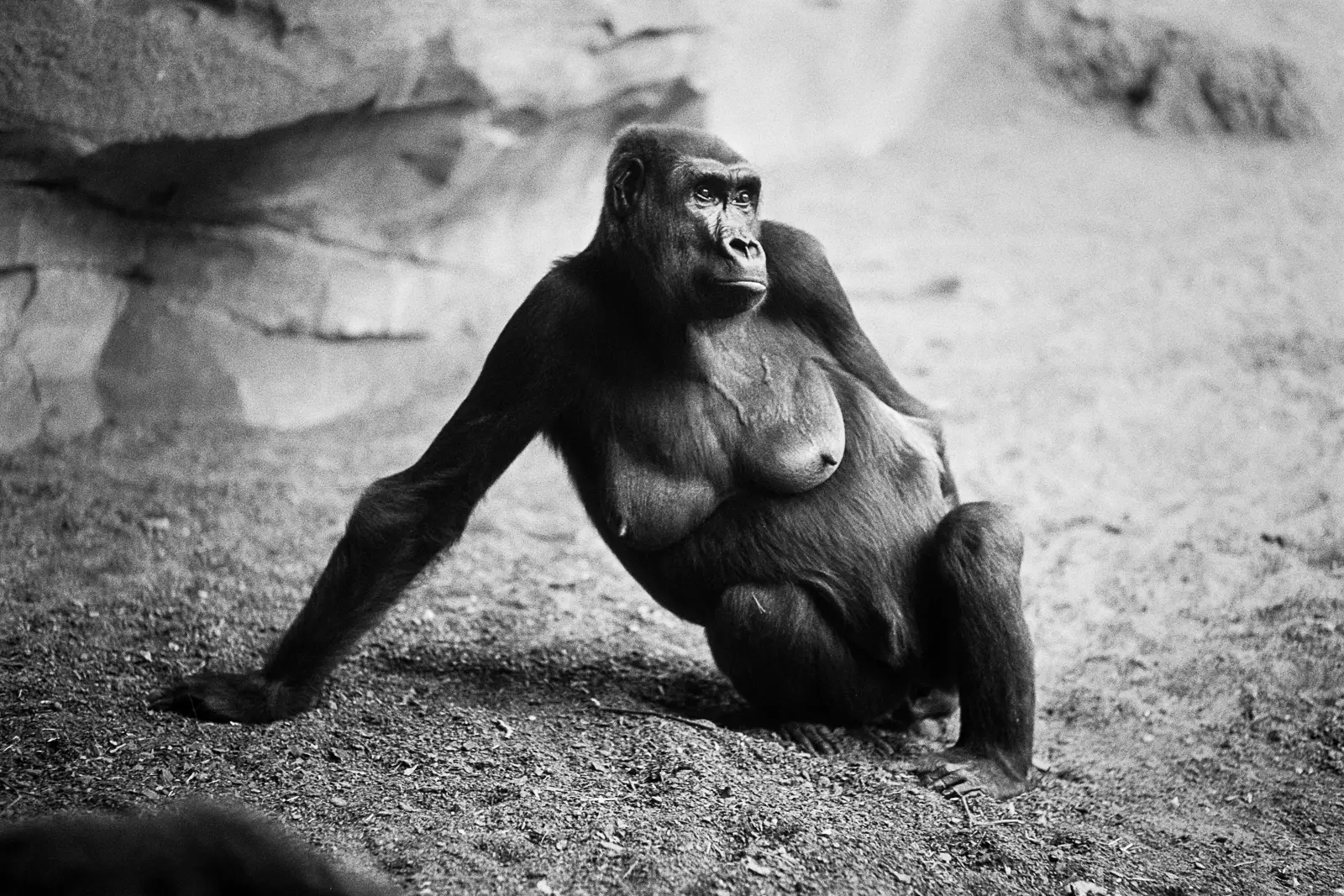








Comments
Aristo Ioannidis on Shooting Black & White Film at the Zoo – by Christian Schroeder
Comment posted: 16/01/2020
Great story. Like you I do encourage my wife to reward herself so that I may do the same.
Regards,
Aristo
Comment posted: 16/01/2020
Duncan G on Shooting Black & White Film at the Zoo – by Christian Schroeder
Comment posted: 16/01/2020
Comment posted: 16/01/2020
JamesW on Shooting Black & White Film at the Zoo – by Christian Schroeder
Comment posted: 16/01/2020
Comment posted: 16/01/2020
Gandhi Cabañas on Shooting Black & White Film at the Zoo – by Christian Schroeder
Comment posted: 16/01/2020
Comment posted: 16/01/2020
Steven Bleistein on Shooting Black & White Film at the Zoo – by Christian Schroeder
Comment posted: 16/01/2020
Comment posted: 16/01/2020
Charles Higham on Shooting Black & White Film at the Zoo – by Christian Schroeder
Comment posted: 16/01/2020
Comment posted: 16/01/2020
Matthias Steck on Shooting Black & White Film at the Zoo – by Christian Schroeder
Comment posted: 16/01/2020
Comment posted: 16/01/2020
Comment posted: 16/01/2020
JimSangwine on Shooting Black & White Film at the Zoo – by Christian Schroeder
Comment posted: 16/01/2020
Comment posted: 16/01/2020
eric on Shooting Black & White Film at the Zoo – by Christian Schroeder
Comment posted: 17/01/2020
Wonderful.
Great.
Animals are not easy to photograph, the same for kids, or other subject, there you arrive to one impressive level of talent in front of this difficult moving subject : wonderful BW (it's not important, but it is not a high speed film, more a slow one, but it is not important ;-) ), REAL TALENT, great composition, artist eye to find the decive moment to give a kind of humanity to this animals (sometimes for example in street photography the persons are not well taken at the good moment which not gives the best of them ...), very high sharpeness, and really a story, I stop here because there is more compliments to give, ...
Thanks 35mm and you for sharing this impressive and ... humble way, what it is also the mark of the photographer with great talent
BRAVO
Comment posted: 17/01/2020
Peggy Marsh on Shooting Black & White Film at the Zoo – by Christian Schroeder
Comment posted: 19/01/2020
Comment posted: 19/01/2020
Daniel Castelli on Shooting Black & White Film at the Zoo – by Christian Schroeder
Comment posted: 20/01/2020
The trips ended when the local Board of Education issued strict guidelines on field trips. We were crushed under the weight of the fear of another terrorist attack and the runaway cost of coach rental and insurance.
I recommend looking for one of the best books on zoo photography titled "Please Don't Feed..." by Andy Morley-Hall.
The hippo resembles a nice sausage. Very funny!
Comment posted: 20/01/2020
Clive Williams on Shooting Black & White Film at the Zoo – by Christian Schroeder
Comment posted: 22/01/2020
I've seen brute-force photographers like the one you mentioned at zoos in the UK, sometimes wearing full camouflage gear as if they'd stalked through the mountains and not ridden the little tourist train to the leopard enclosure. I prefer your more contemplative method.
Comment posted: 22/01/2020
Huss on Shooting Black & White Film at the Zoo – by Christian Schroeder
Comment posted: 22/01/2020
Comment posted: 22/01/2020
Jeremy on Shooting Black & White Film at the Zoo – by Christian Schroeder
Comment posted: 24/01/2020
Comment posted: 24/01/2020
Comment posted: 24/01/2020
5 Frames with a 35mm Summicron-R Lens at the Botanical Garden – by Christian Schroeder - 35mmc on Shooting Black & White Film at the Zoo – by Christian Schroeder
Comment posted: 18/04/2020